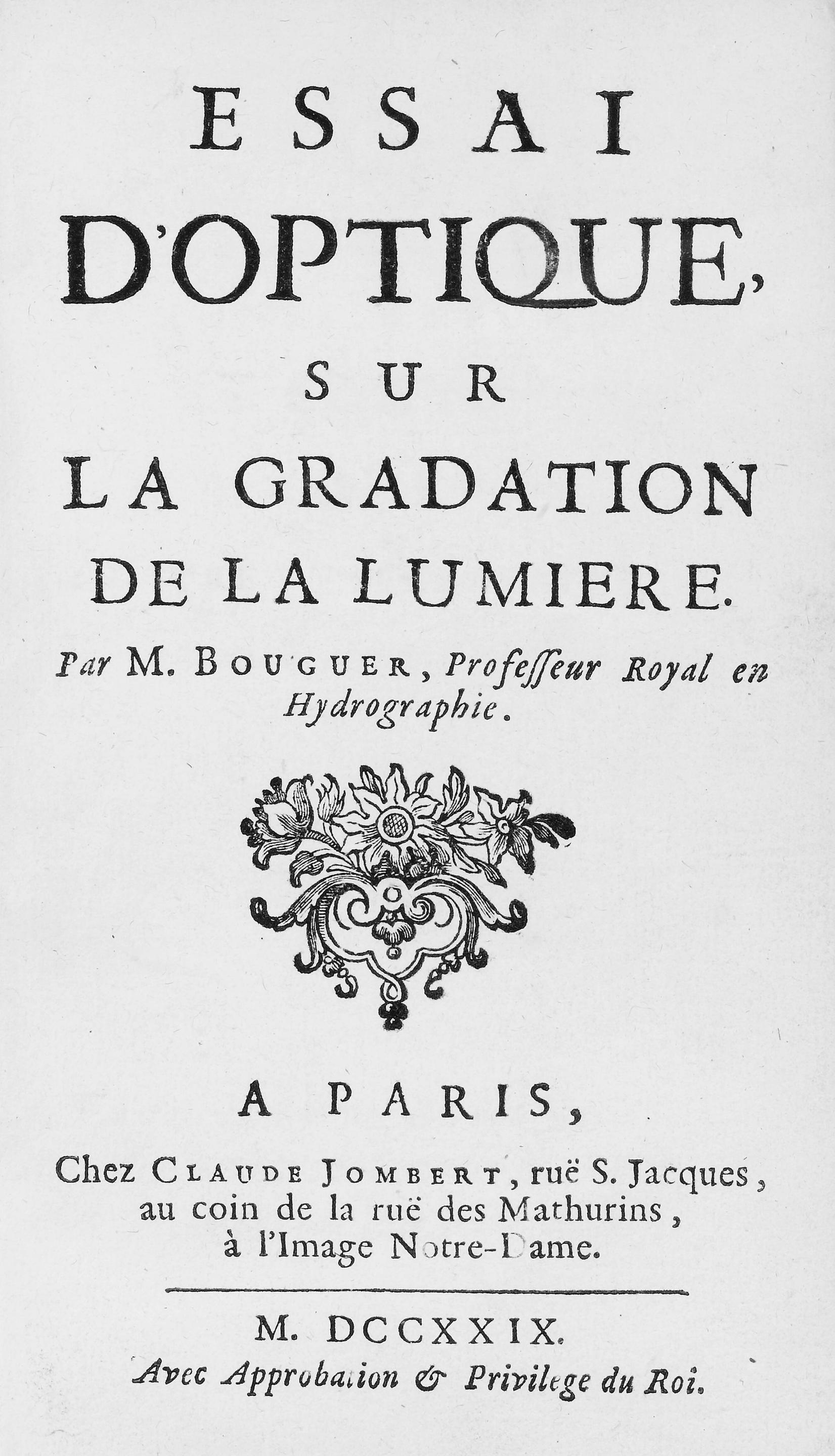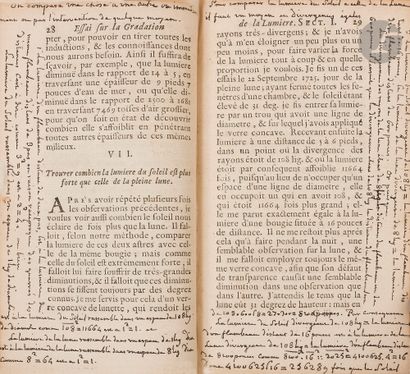BOUGUER, Pierre (1698-1758). Essai d'optique, sur la gradation de la lumiére . Paris: Claude Jombert, 1729. 12 o (159 x 99 mm). 3 folding engraved plates, 2 -page publisher's catalogue at end, woodcut headpieces and initials. Contemporary calf (small chip at head of spine, spine rubbed). Provenance : Ferguson of Raith (bookplate). FIRST EDITION of the first treatise on photometry. As the discoverer of a practical method of measuring the intensity of light, Bouguer was the founder of this branch of optics. A youthful prodigy who established himself early in life as the leading French authority on nautical matters, Bouguer merely dabbled in optics as a hobby. Nevertheless, the Essai contains two fundamental contributions to the subject. The first was his method of using the naked eye "not as a meter but as a null indicator, i.e., to establish the equality of brightness of two adjacent surfaces" (DSB), and then applying Kepler's law of inverse squares. His second discovery concerned the transmission of light through transparent surfaces: "In a medium of uniform transparency the light remaining in a collimated beam is an exponential function of the length of its path in the medium. This law was restated by J. H. Lambert in his Photometria (1760) and, perhaps because of the great rarity of copies of Bouguer's Essai , is sometimes unjustifiably referred to as Lambert's law" (op. cit.). Norman 283.
BOUGUER, Pierre (1698-1758). Essai d'optique, sur la gradation de la lumiére . Paris: Claude Jombert, 1729. 12 o (159 x 99 mm). 3 folding engraved plates, 2 -page publisher's catalogue at end, woodcut headpieces and initials. Contemporary calf (small chip at head of spine, spine rubbed). Provenance : Ferguson of Raith (bookplate). FIRST EDITION of the first treatise on photometry. As the discoverer of a practical method of measuring the intensity of light, Bouguer was the founder of this branch of optics. A youthful prodigy who established himself early in life as the leading French authority on nautical matters, Bouguer merely dabbled in optics as a hobby. Nevertheless, the Essai contains two fundamental contributions to the subject. The first was his method of using the naked eye "not as a meter but as a null indicator, i.e., to establish the equality of brightness of two adjacent surfaces" (DSB), and then applying Kepler's law of inverse squares. His second discovery concerned the transmission of light through transparent surfaces: "In a medium of uniform transparency the light remaining in a collimated beam is an exponential function of the length of its path in the medium. This law was restated by J. H. Lambert in his Photometria (1760) and, perhaps because of the great rarity of copies of Bouguer's Essai , is sometimes unjustifiably referred to as Lambert's law" (op. cit.). Norman 283.









Try LotSearch and its premium features for 7 days - without any costs!
Be notified automatically about new items in upcoming auctions.
Create an alert